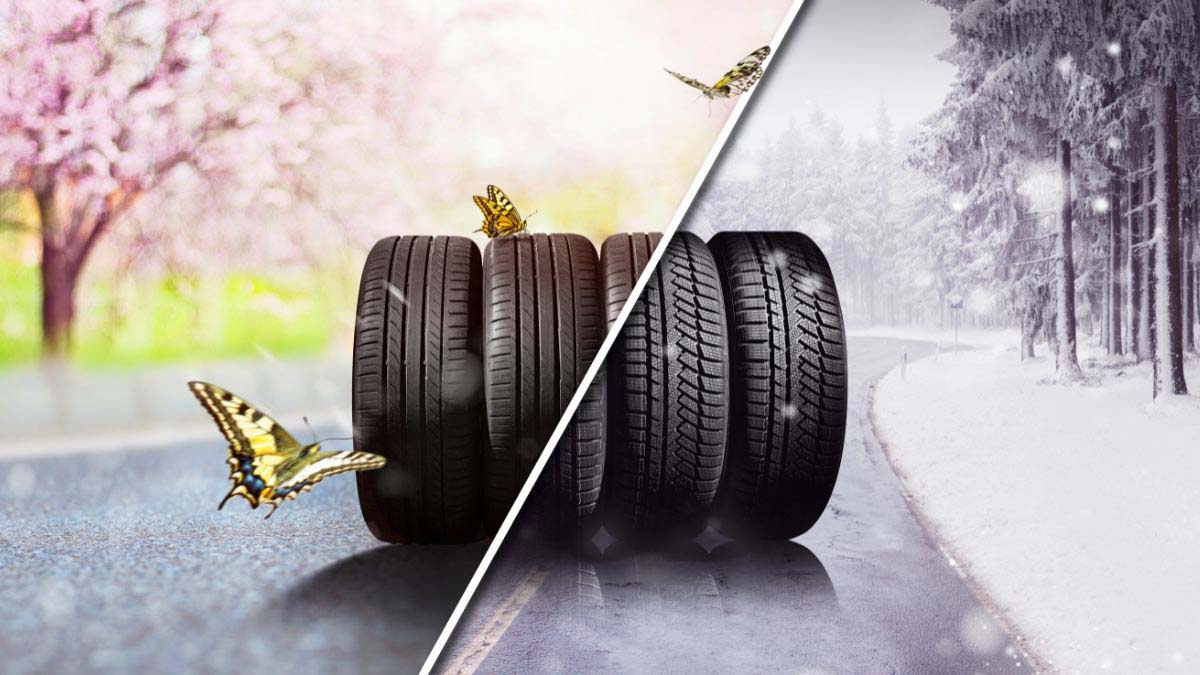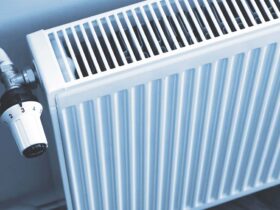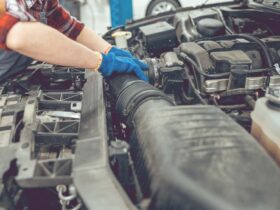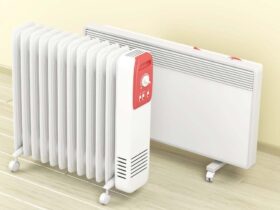Foam filling for tires is a process of injecting foam into the tire, providing puncture resistance and preventing flat tires. Foam filling increases stability and traction while reducing vibrations for a smoother ride.
It is commonly used in industrial and off-road vehicles, construction equipment, and lawnmowers. In addition to its durability and performance benefits, foam-filled tires require minimal maintenance and eliminate the need for air pressure checks.
The Benefits Of Foam Filling
When it comes to tire maintenance, one option that stands out for its numerous advantages is foam filling. Foam filling offers enhanced tire safety and improved performance. Let’s take a closer look at these benefits:
Enhanced Tire Safety
With foam filling, your tires are significantly less prone to blowouts or punctures. The foam provides a layer of protection that helps to prevent objects such as nails or sharp debris from penetrating the tire. This reduces the risk of accidents and ensures a smoother and safer ride for you and your vehicle.
Foam filling also enhances the stability of the tire, making it less susceptible to rolling or shifting in high-speed turns or uneven terrains. This added stability promotes better control and handling, especially in challenging driving conditions.
Improved Performance
When your tires are filled with foam, they offer improved performance in various aspects. Firstly, foam filling eliminates the need for tire pressure monitoring and maintenance. Unlike air-filled tires, foam-filled tires do not experience pressure loss over time, saving you the hassle of frequent inflation checks.
Additionally, foam filling reduces vibrations and minimizes the risk of tire imbalance. This leads to smoother rides and enhanced vehicle maneuverability. With less vibration, your vehicle’s suspension system experiences less stress, resulting in reduced wear and tear on both the tires and other suspension components.
Moreover, foam filling allows for increased payload capacity. The foam-filled tire can support heavier loads without compromising performance or safety. This makes it ideal for vehicles that carry heavy equipment or goods, such as construction vehicles or delivery trucks.
In summary, foam filling offers multiple benefits including enhanced tire safety and improved performance. By opting for foam-filled tires, you can enjoy a safer and more efficient driving experience. Whether you are navigating through rough terrains or transporting heavy loads, foam-filled tires are a reliable choice that will keep you on the road with confidence.

How Foam Filling Works
Foam filling for tires is a process that involves injecting foam into the tires to provide added support and prevent punctures. This method enhances tire durability and improves vehicle safety by eliminating the risk of flats caused by nails, rocks, or other sharp objects on the road.
The Process Of Foam Filling
Foam filling is a highly effective method of enhancing tire performance and durability. The process involves injecting a specially formulated liquid foam into the tire, which then expands to fill the empty space within. This foam provides superior support and stability to the tire, eliminating the risk of flats and reducing the need for regular maintenance.
To begin the foam filling process, the tire is first deflated and placed on a specialized machine or fixture. A hole is then drilled into the sidewall or tread of the tire, allowing access for the foam to be injected. The foam, typically made from a polyurethane mixture, is carefully pumped into the tire through the drilled hole.
As the foam is injected, it expands and fills the tire cavity completely. This ensures that the foam reaches every nook and cranny within the tire, including the areas that are difficult to access. Once the tire is completely filled, the hole is sealed, and the tire is ready for use.
Effects On Tire Performance
When foam filling is done correctly, it can have a significant impact on tire performance. One of the main advantages of foam filling is improved puncture resistance. The foam acts as a barrier between the tire and any sharp objects that may puncture it, reducing the likelihood of flats and increasing the tire’s lifespan.
Besides puncture resistance, foam filled tires offer enhanced stability and traction, particularly in rugged or off-road conditions. The foam provides an added layer of support, preventing tire sag and reducing the risk of tire deformation. This results in improved handling and a smoother ride for the driver.
Another benefit of foam filling is the ability to adjust the tire’s pressure. Unlike traditional air-filled tires, foam filled tires do not require regular monitoring or inflation. The foam filling process allows for precise control over the tire’s pressure, ensuring optimal performance for specific applications.
Furthermore, foam filled tires excel in extreme temperatures, both hot and cold. The foam acts as an insulating layer, helping to maintain tire pressure and performance even in extreme weather conditions. This makes foam filled tires a reliable choice for industries that operate in challenging environments.
It is important to note that foam filling can add some weight to the tire, which may affect fuel efficiency. However, the benefits of improved performance and reduced maintenance outweigh the slight increase in weight for most applications.

Foam Filling Vs. Traditional Air Filling
When it comes to tires, one crucial decision you must make is whether to opt for foam filling or stick to the traditional air filling. This decision can have a significant impact on both safety and performance. Let’s take a closer look at how foam filling and traditional air filling compare in terms of safety and performance.
Comparison Of Safety
Safety is of utmost importance when it comes to tires, and the choice between foam filling and traditional air filling can make a difference. Here’s how they compare:
Foam Filling:
- Eliminates the risk of blowouts due to punctures or leaks.
- Provides enhanced stability and prevents tire slippage.
- Reduces the chances of tire bursts, especially in off-road or rugged terrains.
Traditional Air Filling:
- Requires regular maintenance and inflation checks to ensure optimum pressure.
- Prone to sudden deflation due to punctures, potentially leading to loss of control.
- Less stable compared to foam-filled tires, especially in rough or challenging conditions.
Comparison Of Performance
The performance of your tires can greatly impact the overall efficiency and effectiveness of your vehicles. Here’s a comparison of foam filling and traditional air filling in terms of performance:
Foam Filling:
- Improves traction and grip, enhancing the overall handling of the vehicle.
- Minimizes tire vibrations and reduces road noise, providing a smoother driving experience.
- Eliminates the need for constant pressure checks, saving time and effort.
Traditional Air Filling:
- Allows for easy adjustment of tire pressure based on specific driving conditions.
- Provides a lightweight option, ideal for vehicles that require agility and speed.
- Offers a wider range of tire options, including performance and specialty tires.
When it comes to choosing between foam filling and traditional air filling for your tires, considering both safety and performance is crucial. Foam filling provides added safety, stability, and improved overall performance, making it an excellent choice for various applications. However, traditional air filling offers flexibility and options, which might be suitable for specific vehicle and driving needs. Ultimately, the decision lies in weighing your priorities and selecting the option that best aligns with your requirements.

Understanding The Types Of Foam Fillers
Foam filling for tires comes in different types, offering various benefits. Understanding these foam fillers can help you choose the right one for your specific needs.
Understanding the Types of Foam Fillers Foam filling for tires is crucial for enhancing the performance and durability of tires, especially in heavy-duty industrial and off-road applications. Different types of foam fillers are available, each with unique characteristics and benefits. Understanding the options available for foam fillers is essential to determine the most suitable solution for specific tire applications.
Polyurethane Foam
One of the most common types of foam fillers for tires is polyurethane foam. This type of foam filler offers exceptional durability and resistance to wear and tear. Polyurethane foam not only provides superior support and stability to tires but also helps in preventing punctures and maintaining consistent tire pressure. Additionally, polyurethane foam fillers contribute to reducing vibration and noise, thus improving overall operator comfort and safety.
Other Foam Fillers
In addition to polyurethane foam, there are various other foam fillers used for tire applications. These include but are not limited to latex foam, rubber foam, and closed-cell foam. Each type of foam filler has its specific strengths and advantages, offering varying levels of support, resilience, and resistance to environmental factors. Latex foam, for instance, is known for its flexibility and shock absorbency, making it suitable for certain off-road and agricultural tires. By considering the unique characteristics of each type of foam filler, businesses and operators can make informed decisions regarding the most suitable option for their specific tire applications. The right foam filler can significantly extend the lifespan of tires, minimize downtime, and enhance the overall efficiency and safety of equipment.

Installation Process For Foam Filling
When it comes to ensuring the longevity and durability of your tires, foam filling is a popular solution. The installation process for foam filling is crucial to guarantee its effectiveness. It involves several steps and specific equipment to ensure that the tires are properly filled with foam.
Preparation And Equipment
Before beginning the foam filling process, it is essential to gather all the necessary equipment. This includes a foam filling kit, tire pressure gauge, valve core removal tool, and foam filling compound. Ensure that the tire is clean and free from any debris or punctures to allow for a smooth filling process. The tire should also be fully inflated to the recommended pressure.
Step-by-step Installation
- Remove the valve core from the tire using the valve core removal tool. This will allow for the foam filling compound to be injected into the tire.
- Attach the foam filling kit to the valve stem and inject the foam compound into the tire. The amount of foam needed will depend on the size of the tire, so refer to the manufacturer’s guidelines for the appropriate quantity.
- Once the foam is injected, reinstall the valve core and use the tire pressure gauge to ensure the tire is inflated to the recommended pressure.
- Rotate the tire to evenly distribute the foam filling compound inside the tire. This will help to provide uniform support and weight distribution.
- After completing these steps, the tire is ready to be used and will offer enhanced stability, puncture resistance, and extended tire life due to the foam filling.
Maintenance And Longevity Of Foam Filled Tires
Regular inspection and maintenance play a crucial role in ensuring the longevity and performance of foam filled tires. Proper care and attention can extend the life of foam filled tires, offering an array of benefits such as enhanced safety, improved durability, and reduced downtime. In this section, we will delve into the importance of regular inspection and maintenance, as well as the need for replacing and replenishing foam fill.
Regular Inspection And Maintenance
Regular inspection of foam filled tires is essential to identify any signs of wear and tear or potential issues that may impact their performance. By visually examining the tires, you can spot punctures, cuts, or leaks in the foam fill, allowing for timely repairs and preventing further damage. Additionally, inspecting the tread depth and overall condition of the tires ensures consistent traction and prevents accidents caused by worn-out tires.
To maintain foam filled tires in optimal condition, it is recommended to clean them regularly to remove any debris or buildup that may affect their performance. This can be done using a mild soap and water solution, avoiding harsh chemicals that could potentially damage the filling. Keeping the tires clean not only improves their appearance but also enables better heat dissipation, contributing to increased longevity.
Replacing And Replenishing Foam Fill
Over time, the foam fill inside the tires may degrade or break down, affecting the tire’s performance. This is why regular replacement and replenishment of the foam fill is necessary. Depending on the usage and conditions, foam fill may need to be replaced every few years or at recommended intervals.
When replacing the foam fill, it is important to choose high-quality foam that is specifically designed for tire filling. This ensures optimal performance and longevity. Replenishing the foam fill can be done by a certified technician, who will remove the existing foam and replace it with new foam, providing the tire with restored support, stability, and resistance to punctures.
By regularly inspecting and maintaining foam filled tires, as well as replacing and replenishing the foam fill when necessary, you can ensure the longevity of your tires and maximize their performance. Taking these steps will not only extend the lifespan of your foam filled tires but also contribute to a safer and more efficient operation. Invest in proper upkeep for your foam filled tires to reap the benefits for years to come.

Common Misconceptions About Foam Filling
Foam filling for tires is often misunderstood. Contrary to popular belief, foam filling doesn’t necessarily make tires indestructible. While it provides added durability and puncture resistance, it’s important to understand its limitations for optimal performance and maintenance.
When it comes to foam filling for tires, there are several misconceptions that may prevent people from considering this beneficial option for their vehicles. In this article, we will tackle two common misconceptions surrounding foam filling: the cost and affordability, as well as the impact on tire warranty.
1. Cost And Affordability
Many people believe that foam filling for tires is an expensive option, reserved only for heavy-duty industrial applications. However, this is a misconception. While it is true that foam filling does have an initial cost, it is important to consider the long-term benefits it provides.
Compared to constantly replacing pneumatic tires due to punctures, foam filled tires are more cost-effective in the long run. By eliminating the risk of punctures and flat tires, foam filling helps reduce costly downtime and maintenance expenses.
Moreover, foam filling allows for lower tire pressure, which results in increased fuel efficiency and reduced tire wear. This leads to long-term cost savings by extending the lifespan of your tires and improving overall vehicle performance.
2. Impact On Tire Warranty
Some people are concerned that foam filling their tires will void their tire warranty. However, this is another misconception. While it is always recommended to check with your tire manufacturer, most tire warranties do not exclude foam-filled tires.
In fact, foam filling can even enhance certain aspects of your tire warranty, such as providing added protection against impact damage. Foam-filled tires offer improved stability and sidewall support, reducing the risk of sidewall punctures and tread separations.
However, it is crucial to inform your tire dealer or manufacturer about the foam filling process and ensure it is carried out by a reputable professional. Following proper installation procedures guarantees that your warranty remains intact.
In conclusion, foam filling for tires is a cost-effective and reliable solution, contrary to common misconceptions. It has the potential to provide long-term savings, enhance tire performance, and improve overall vehicle safety without voiding your tire warranty.
Frequently Asked Questions On Foam Filling For Tires
What Kind Of Foam Do You Use To Fill Tires?
We use specialized polyurethane foam to fill tires, providing excellent durability and support. This foam offers superior performance and helps prevent flat tires and punctures.
How Much Does It Cost To Foam Fill Tires?
Foam filling tires typically costs around $30 to $40 per tire, depending on the size and type of tire. It provides increased durability and eliminates the risk of flat tires, offering peace of mind while driving.
What Are The Disadvantages Of Foam Filled Tires?
Foam filled tires have a few disadvantages. They are heavier, which affects fuel efficiency. They have a higher initial cost and are more difficult to repair. They also don’t provide the same level of cushioning as air-filled tires, resulting in a rougher ride.
Conclusion
Foam filling for tires is a game-changer in the automotive industry. Not only does it provide enhanced safety and stability, but it also eliminates the worry of flat tires. With its ability to distribute weight evenly and reduce vibration, foam filling offers a smoother ride for drivers and passengers.
This innovative solution is a testament to how technology continues to revolutionize our everyday lives. Tire manufacturers and vehicle owners alike can benefit from incorporating foam filling into their operations and maintenance routines.





